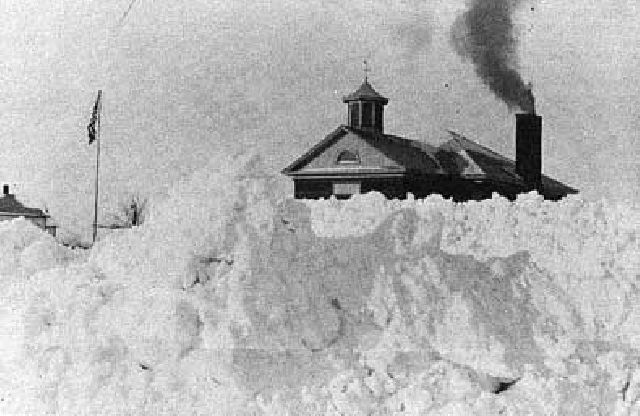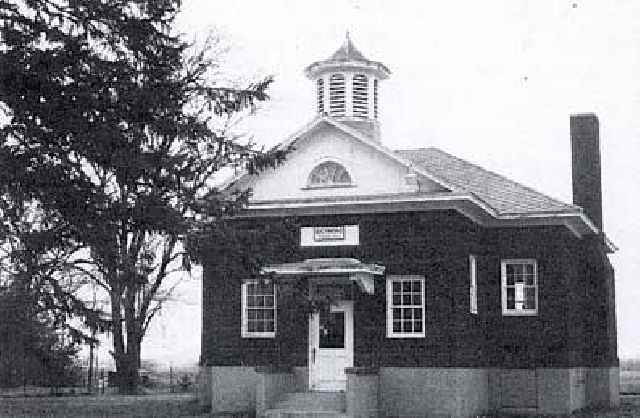
It used to be called Lone Tree.
This small community where the Town of Richmond’s town hall is now located, was originally called Lone Tree until around 1856. That is when Francis S. Boardman arrived, became the first postmaster and merchant and had the community named after him.
The school district for Boardman was organized in 1857, and the first school building was built in 1861. The first trustees were Ira Parke, C. A. Boardman and S. L. Beebe. Warren Libbey was the first teacher. This schoolhouse was also used by the Methodists for church services until 1880, when their church was built. We don’t know for certain when the original school was destroyed, but since the cyclone of 1899 wiped out the entire community, this is perhaps what happened to this building also. Another wooden building replaced this structure and then in 1927, and with a growing population, a new red brick school was erected to house 60 students. In 1952, Boardman consolidated with New Richmond, and after a few years of use as a supplemental 3rd grade classroom, it became the Richmond Town Hall, and remains so today. Anna Mondor taught in this school and other schools in Richmond Township, before going on to being the town clerk, a position she held for a number of years During this same time period in the school history of Richmond township, there were 5 other rural schools, all established in the mid-1800’s. Springbrook in Section 26, Oak Hill in Section 33, District #5 in Section 14, Clarendon in Section 7, and Lonesome Trail in Section 5. All of these schools consolidated with New Richmond in the 1950’s.

In the Northern area of Richmond Township, the first settler was Eban Quimby, who built a house in 1852 at the mouth of Paperjack Creek, where it empties into the Willow river. The next family to move to this part of the township was the J. D. Johnson family, who in 1853 moved to the ‘spring farm’, named for the large spring on the property. On this farm, he raised the first wheat in Richmond Township. When it was ready to be harvested, it was hauled to Hudson to be threshed and he had a total of 9 bushels of wheat. Most of Richmond township remained essentially a farming community until the 1980’s when agriculture gave way to subdivisions and there are now presently 35 subdivisions in the township today.
In the oldest ledgers available for Richmond Township, we find that in 1907, James Pryor was town treasurer, Patrick J. Early was town clerk, Patrick Brown and W. H. Casey were supervisors, and J. D. Kennie was chairman. These officials were paid $22-$25 a year for their work and the total tax liability for 1907 was $9,199.31. By 1915-16, our taxes had risen to $14,705.99 which included $179.87 for a “road dragging fund”. Some names that begin to appear with frequency in the early 1900’s are Murray, Ball, Joyce, Early, and Brown. view historic plats of Richmond
In 1936, one of the hottest Summers on record, on August 5, Mrs. Ed Roethle and Mrs. Jos. J. Kelly were paid .40 cents per meal for 39 meals for the road crew. This same year, Alfred Bader bought the home where Warren and Shirley presently live, and paid $4.00 a year in real estate taxes. At this same time also, in an ad in the 1929 plat book, the then Bank of New Richmond, established in 1878, had $112,500.00 in capital and surplus.
In the mid 1960’s, Warren Bader became a supervisor and has been supervisor or chairman for 45 years until his retirement in 2009. Mary Kelly started as treasurer in 1969 and retired from this post in 2011.
This history was compiled by Donna Preece and she takes responsibility for its content. Special acknowledgement goes to ‘Down On The South Side’, one book in a series published by the New Richmond Heritage Center. Also ‘Remembering Rural Schools in St. Croix County’, compiled by St. Croix Co. Extension Homemakers.
